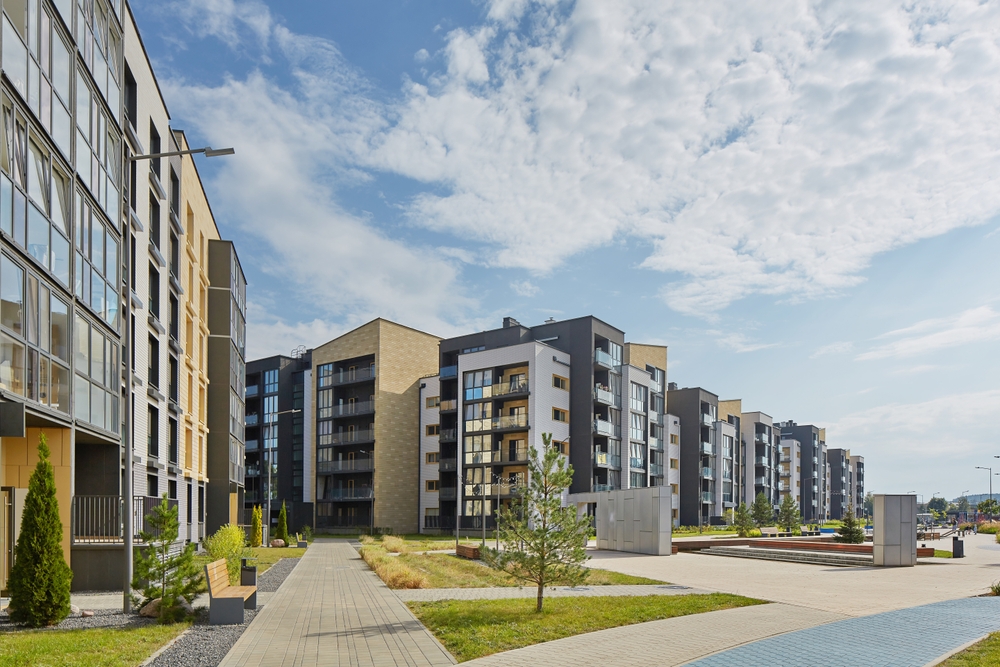
A homeowners association is a governing body responsible for managing and maintaining the common areas of a residential community. When you purchase property within an HOA, you automatically become a member and are required to follow the community’s rules—usually outlined in a document known as the CC&Rs (Covenants, Conditions, and Restrictions).
HOAs collect regular fees (monthly, quarterly, or annually) from property owners to fund shared services and amenities such as landscaping, pool maintenance, and snow removal. These fees and the rules they enforce vary widely from one community to another.
While some landlords shy away from HOA properties, others find that the benefits can outweigh the restrictions—depending on the community and the terms of the CC&Rs.
1. Attractive Amenities Can Boost Rental Appeal
HOA communities often offer amenities like swimming pools, fitness centers, clubhouses, dog parks, or tennis courts. These shared features can increase your rental property's appeal, making it easier to attract high-quality tenants and potentially justify higher rent prices.
2. Consistent Maintenance Enhances Property Value
HOAs typically manage the upkeep of shared landscaping, sidewalks, and community signage. This helps maintain a clean, uniform appearance throughout the neighborhood, which can preserve or even enhance property values over time.
3. Reduced Maintenance Burden for Landlords
In many cases, HOAs take responsibility for maintaining common areas and infrastructure, which can lighten your maintenance load as a landlord. Tasks such as snow removal, trash collection, and lawn care may already be included in your HOA fees—saving time and reducing the need for coordinating vendors.
Despite the potential upsides, there are several drawbacks that landlords must weigh carefully before purchasing a property in an HOA community.
1. Restrictions on Rentals
Some HOAs place strict limitations on whether or how properties can be rented out. These can include:
These rules can limit your ability to market and lease the property as you see fit, and they may change over time if the HOA votes to revise them.
2. HOA Fees Eat Into Your Cash Flow
While HOA dues fund important services, they also represent an ongoing cost that impacts your monthly net income. In some communities, fees may be modest, while in others they can exceed several hundred dollars per month. It’s also important to account for the fact that HOA dues are likely to increase over time.
3. Risk of Special Assessments
HOAs may levy special assessments for large or unexpected expenses not covered by the reserve fund—such as roof replacements, major repairs, or lawsuits. These assessments can be substantial and may be required on short notice. As an investor, it’s wise to maintain an emergency fund for this type of situation.
4. Limited Control Over Exterior and Common Areas
Many HOAs enforce strict aesthetic standards. This could include approved paint colors, landscaping requirements, exterior décor limitations, or restrictions on signage. While these rules help maintain uniformity, they also reduce your autonomy as a property owner.
Understanding Common HOA Lease Requirements
If an HOA permits rentals, you’ll likely be expected to comply with specific lease-related procedures. These may include:
In more restrictive associations, renters may even be required to interview with the board. All of this adds extra steps to the leasing process and can delay tenant placement.
In many jurisdictions, the answer is yes. HOAs can prohibit rentals outright if their CC&Rs include such restrictions and the changes were passed through proper governance procedures. Most commonly, HOAs seek to limit short-term rentals to preserve a residential feel and minimize tenant turnover. However, long-term rentals can also be limited in some cases.
As a landlord, it’s vital to read the governing documents thoroughly and consult with legal counsel if anything is unclear—especially if your investment strategy depends on flexible leasing terms.
Whether or not HOA properties make sense for your investment portfolio depends on your goals, the local market, and the specific community. Some landlords find that the reliable appearance, reduced maintenance, and appealing amenities of HOA communities allow for consistent, profitable rentals. Others may view the restrictions and added fees as a burden that limits profitability and autonomy.
Run the numbers carefully. For example, if rent for similar properties in the area is $1,600/month and HOA dues are $250/month, will you still meet your target return on investment? If not, consider whether a non-HOA property might offer a better financial fit.
Investing in rental properties governed by HOAs requires careful due diligence. Landlords must weigh the pros—like amenities and reduced maintenance—against the cons, including restrictions, added costs, and potential unpredictability. The key is to understand each community's rules before making a purchase, and to plan your investment strategy accordingly.
If you’re considering renting out a property in an HOA community, working with a professional property management company can help you navigate compliance and streamline operations. Gordon James Realty offers full-service property management solutions tailored to investor needs. Contact our team to find out how we can help manage your rental property smoothly and compliantly.

Explore the pros and cons of fixing and flipping homes versus renting properties. Learn which real estate strategy suits your investment goals best.

Discover six common mistakes new landlords make when investing in rental properties and learn strategies to avoid them for better profitability and success
We're proud to make partnering with us easy. Contact our team to connect with one of our industry experts and get started today.